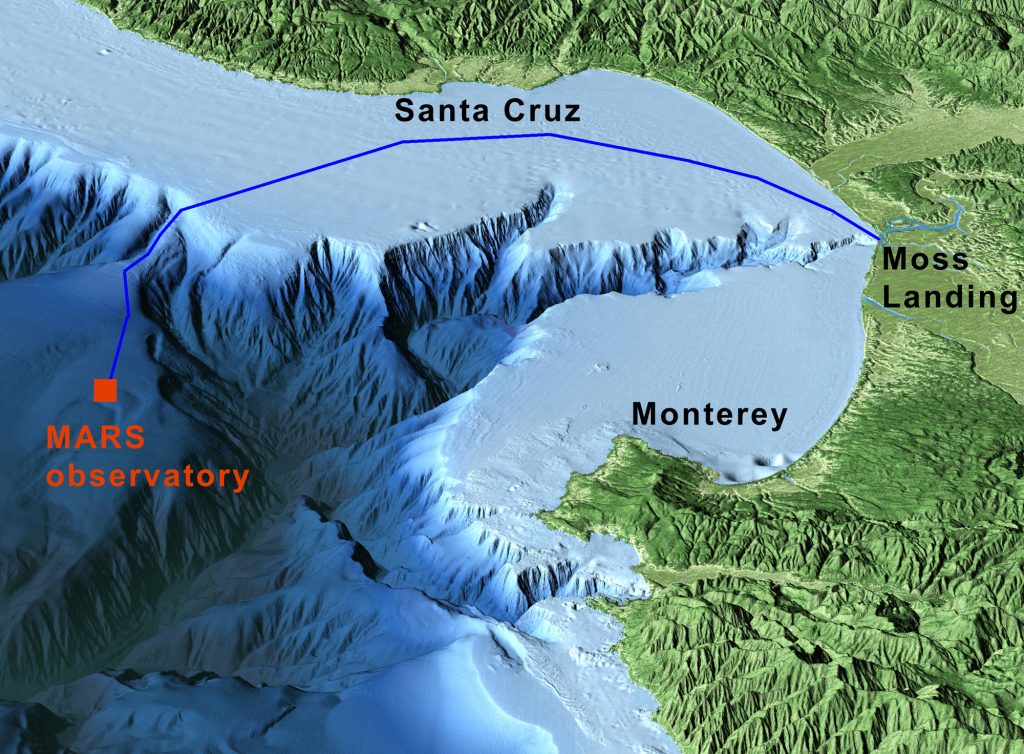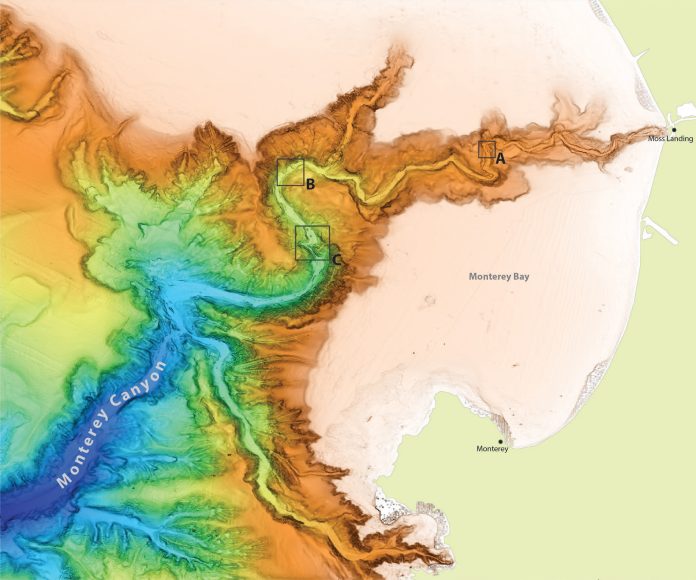Not often realized by many is the fact that some of the world’s deepest valleys, highest peaks and largest plains are found at the ocean floor. California State University, Monterey Bay (CSUMB) located just a few miles away from a geographical wonder that rivals that of the Grand Canyon in northeastern Arizona.
This natural marvel is known as the Monterey Canyon, the deepest submarine canyon on the Pacific Coast and one of the estimated 9,477 submarine canyons in the world that covers about 11 percent of the continental slope. The Monterey Canyon starts offshore at Moss Landing with tributaries extending from the Soquel Canyon to the north and the Carmel Canyon to the south. The canyon drops to a depth of over two miles, twice as deep as the Grand Canyon, and spreads almost 250 miles out into the ocean.
CSUMB fourth-year marine science major, Duncan Miller, said, “I initially learned about the submarine canyon in my environmental policy class. I was formally introduced to the undersea canyon in my marine biology course on a field trip to Moss Landing Marine Labs.”
The Monterey Canyon “is a major feature that serves as a foundation for one of the most diverse temperate ecosystems in the world,” said James Lindholm, professor of natural sciences and the James W. Rote Distinguished Professor of Marine Science and Policy. “One of the coolest things about the Monterey Canyon, as well as its offshoot, the Carmel Canyon, is the proximity to shore. Both canyons effectively bring the deep sea within range of shore,” continued Lindholm who also serves as the Director of the Institute for Applied Marine Ecology at CSUMB.
As submarine canyons consist of a wide range of habitats that extend from shallow waters of the continental shelf to the deep sea, they understandably contain a large diversity of organisms from krill, prickly sharks, clams, worms; invertebrates such as coral, sea cucumbers, sea pens; and fishes such as flatfishes, whiptails, hake and thornyheads.

“The rocky deep sea habitat boasts rare and bizarre species such as the comb jelly, vampire squid, and the fangtooth fish,” said Miller, “all can survive at the intense pressures and without sunlight, some can withstand these harsh conditions for weeks or months; others stay for the extent of their lifetimes.”
The Monterey Canyon has not only been a resource for CSUMB students, local residents and visitors alike, but also – for more than a century of documented history – a major resource for commercial fishermen who had travelled to the region specifically to harvest its rich abundance and diversity of marine life.
Several institutions are located at Moss Landing collaborating on research as well as protection of the region. The Monterey Bay Aquarium Research Institute (MBARI) is a private, non-profit oceanographic research center, founded in 1987 by David Packard, with primary funding coming from the David and Lucile Packard Foundation. Charged with protection of part of the area is The Soquel Canyon State Marine Conservation Area, an offshore marine protected area in Monterey Bay.
Within the State Marine Conservation Area, fishing and taking of any living marine resources is prohibited except the commercial and recreational take of pelagic, or open ocean, finfish. CSUMB offers a single, interdisciplinary undergraduate degree in marine science that prepares students for a wide variety of jobs and graduate school programs. A masters degree in marine science is available through a collaboration with Moss Landing Marine Labs, a program of the California State University system with CSUMB and San Jose State University as key participants.
“The submarine canyon provides the ability for an entire deep sea ecosystem to exist. Marine biologists, such as those at MBARI and the Moss Landing Marine Labs, discover and catalogue uniquely adapted deep sea species that prove to be fascinating examples of the unknown,” said Miller, “Other researchers with a more geology-based background map the vast stretches of seafloor that make up the canyon using sonar, remotely operated vehicles or autonomous undersea vehicles.”
The “CSUMB marine science students have been conducting research in the Monterey and Carmel canyons for years, ranging from topographic mapping to fish ecology. In about 15 minutes, I’ll be diving in the Carmel canyon with CSUMB research divers as part of on-going thesis projects” said Lindholm, “It is quite common for us to be diving deep in the canyon in the morning and then to be back on campus by mid-day. It is one of the best living laboratories in the world.”
“If scientific curiosity remains and the amount of quality research can continue, I predict that more of the public will take notice and expand their horizons,” said Miller, “The Monterey submarine canyon is a natural wonder that should be carefully studied and presented to the world.”

